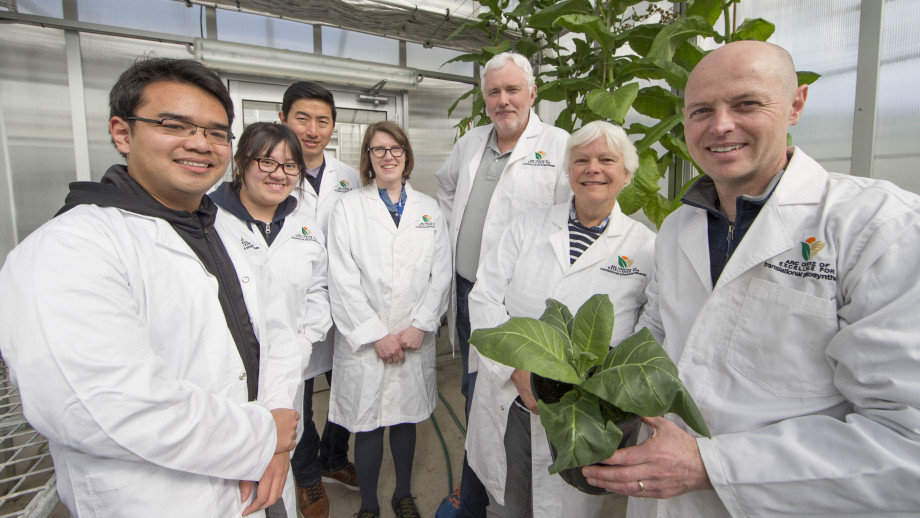
From left to right are Nghiem D. Hguyen, Eng Kee Au, Wei Yih Hee, Eiri Heyno, Professor Dean Price, Professor Susanne van Caemmerer and Research Fellow Dr Ben Long. Credit: ANU
New research suggests that researchers may be able to use blue-green algae to boost crop yield in plants like wheat, cowpeas and cassava.
A team from the Australian National University (ANU) has discovered how to insert tiny compartments from blue-green algae, called carboxysomes, into plants. Carboxysomes are responsible for making cyanobacteria—also known as blue-green algae—so efficient at transforming carbon dioxide into energy-rich sugars.
This could lead to a 60 percent increase in plant growth and yield.
“Until now, inserting a carboxysome into a plant had been in the realm of science fiction and it has taken us more than five years to get to this point,” ,” Ben Long, PhD, from the ANU Research School of Biology, said in a statement. “We are trying to insert a turbo-charged carbon-capturing engine into plants, by mimicking a solution that cyanobacteria—the ancestors of modern plant chloroplasts, the green compartments where plants make their own food—found millions of years ago.”
The enzyme charged with fixing carbon dioxide from the atmosphere called Rubisco, is often slow and unable to differentiate between carbon dioxide and oxygen. This often leads to wasteful energy loss.
However, unlike crop plants, cyanobacteria utilize a carbon dioxide concentrating mechanism that enables it to deliver a substantial amount of gas into the carboxysomes, where Rubisco is encapsulated. This also increases the speed where carbon dioxide can be turned into sugar and minimizes reactions with oxygen.
The Rubisco enzyme inside of cyanobacteria can capture carbon dioxide and generate sugars about three times faster than the Rubisco found in plants.
The researchers used computer models to prove that by upgrading plant photosynthesis to use this mechanism they can significantly increase both plant growth and overall yield.
So far the researchers have successfully inserted a carboxysome into a tobacco plant.
“We still have a lot of work to do, but achieving this in tobacco plants was an absolute essential step that has shown us we can expect to see crops with functional CO₂ concentrating mechanisms in the future, producing higher yield,” Long said.
Eventually the researchers plan to develop a long-term global strategy to enhance crop yields and environmental resilience.
“We need every creative effort to improve crop yields if we want to be able to feed the growing global population and these options take time, so we need to do it now,” co-researcher professor Dean Price from the ANU Research School of Biology, said in a statement.
The study was published in Nature Communications.




